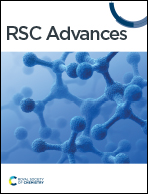Carbon dots with tissue engineering and regenerative medicine applications
Abstract
Carbon dots (CDs) with unique physicochemical features such as exceptional biocompatibility, low cost, eco-friendliness, abundant functional groups (e.g., amino, hydroxyl, and carboxyl), high stability, and electron mobility have been broadly investigated in nano- and biomedicine. In addition, the controlled architecture, tunable fluorescence emission/excitation, light-emitting potential, high photostability, high water solubility, low cytotoxicity, and biodegradability make these carbon-based nanomaterials suitable for tissue engineering and regenerative medicine (TE-RM) purposes. However, there are still limited pre- and clinical assessments, because of some important challenges such as the scaffold inconsistency and non-biodegradability in addition to the lack of non-invasive methods to monitor tissue regeneration after implantation. In addition, the eco-friendly synthesis of CDs exhibited some important advantages such as environmentally friendly properties, low cost, and simplicity compared to the conventional synthesis techniques. Several CD-based nanosystems have been designed with stable photoluminescence, high-resolution imaging of live cells, excellent biocompatibility, fluorescence properties, and low cytotoxicity, which make them promising candidates for TE-RM purposes. Combining attractive fluorescence properties, CDs have shown great potential for cell culture and other biomedical applications. Herein, recent advancements and new discoveries of CDs in TE-RM are considered, focusing on challenges and future perspectives.

- This article is part of the themed collection: 2023 Reviews in RSC Advances


 Please wait while we load your content...
Please wait while we load your content...